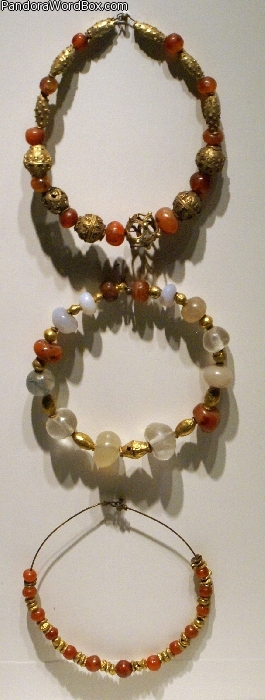Our websites offer information mostly for educational purposes with no intent to alter health care protocols nor to serve as a sole source of medical information.
Always seek the advice of your local health care provider.
|
× UKRAINIAN CHILDREN WITH DISABILITIES HAVE SPECIAL NEEDS |
ANCIENT JEWELS

"Ancient Gems and Jewels from southern Ukraine" (see related A | B | C), 400 Romish-Germanish Museum, Cologne (Koln), Germany
During the 4th-5th. c. tribal Germanic goldsmiths in the lower Danube and Ukraine gained considerable reputation across the Roman Empire, and the jewels they produce have been found in many excavation sites. These masters were fond of precious stones they polished to make large beads for heavy necklaces combined with pearls or characteristic gold tubes or beads. Among the main sites where such jewels were found are regions in Kerch in Crimea and southern Ukraine in general. The goldsmiths relied on classic Greek and Roman techniques enriched by far more ancient styles and approaches. The result were precious and opulent jewels popular everywhere in the Roman Empire. (See orientation map with historical pointers)
Among the most popular stones was Almandine (often incorrectly called almandite), from the garnet Group. The name is from alabandicus, applied by Pliny the Elder to a stone popular in Alabanda, a town in Caria in Asia Minor. It may also be called "Ceylon-Ruby" or "Syrian garnet". The stone is from iron alumina producing a deep red color (purple). When cut with a convex face is then known as "carbuncle" (burning coal like or a skin boil due to a serious infection - anthrax) (anthracite is mineral or stone coal).
20210727 ww
|








